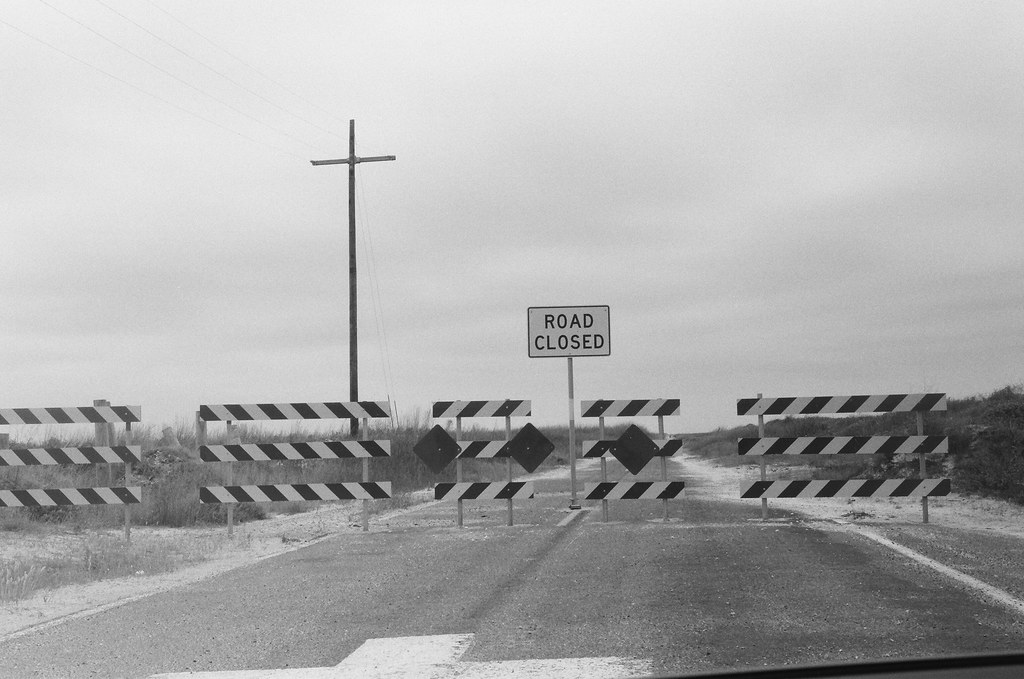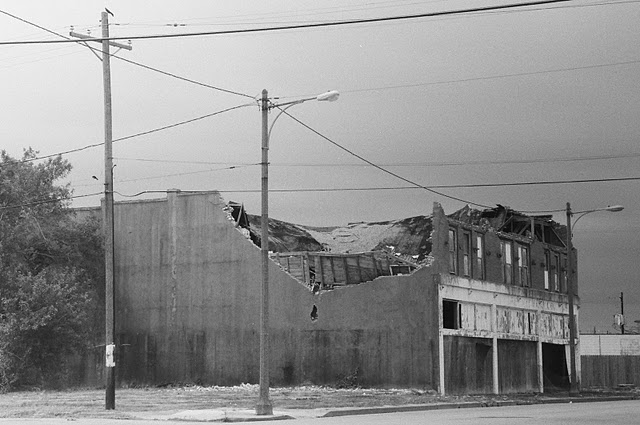 |
| Sabine Pass, TX |
Filmzblog is pleased to present Adam Schwitters as this week's guest photographer. I met Adam some time ago when I started frequenting the Little City coffeeshop in downtown Austin, where he works a few nights a week. It was only recently that I discovered, with pleasure, his photography. There are many people who can tell you with words that which we all know to be true about the South: it is simultaneously a very, very beautiful and very, very strange place. Adam, it seems, has an uncanny ability to communicate that poignancy through photography. Here are some shots from a trip he made through south Texas and Louisiana earlier this year. (Click on any of the images to bring up the lightbox view.) -Austin
About two weeks after the Deepwater Horizon drilling platform exploded into flames and sank into the abyssal, brown waters of the Gulf of Mexico dragging whatever post-election optimism still existed down with it, I left Austin with a plan to hole up in a hotel room somewhere, write, and eat at Al-T’s (a Cajun place in Winnie, TX). While I did stop at the restaurant, I mostly abandoned the rest of my plan, and kept driving. I drove from Point Bolivar, a spit of land opposite Galveston Island, in Texas to Port Sulphur on the lower reaches of the Mississippi in Louisiana. This land has seen an unceasing litany of environmental hardships over the years: anoxic oceanic dead zones caused by the annual release of farm waste far upriver, a poorly conceived levy system that allows an acre of swamp to be lost to the Gulf every day, oil spills, and, of course, the hurricanes.
Every community along the coast has experienced the ravages of Ike, Rita, Gustav, or Katrina. Though New Orleans is furiously rebuilding, places like Cameron, LA seem to have been simply abandoned. They were too isolated, too poor, and too uninsurable to warrant reconstruction. Port Arthur, TX lies some 90 miles east of where the eye of Ike made landfall, and while it was already languishing from poverty and neglect, the 21 foot storm surge that swept up Sabine Pass and over the buildings of its once grand downtown ensured its fate. The ruins of Port Arthur are now visible from space.
It being in the first days of the oil spill, I made a half-hearted effort to track down the facility where a giant steel dome was being welded together in, what would prove to be, the first of many failed attempts to stop the leaking Macondo well. I never did find that dome, but I did travel down the small bayous where the men and women who operate the largest commercial fishery in the US live and work. In Lower DuLac, I saw a world that was teetering on the precipice. The fishery had not yet been closed, but it was all too clear that the great gusher of crude oil in the deep water would mean the end of the shrimp and oyster catches.
The central Gulf coast has always been a hard land. The first European to traverse it, Cabeza de Vaca, called it, “a land so strange and so poor and so lacking in every single thing that it seemed impossible to be in it or to escape from it.” He could not imagine the true bounty that exists under the waters, and in the estuaries, and in the people of this region.
All the photos in this series were taken on my old Pentax K-1000.
All the photos in this series were taken on my old Pentax K-1000.








No comments:
Post a Comment